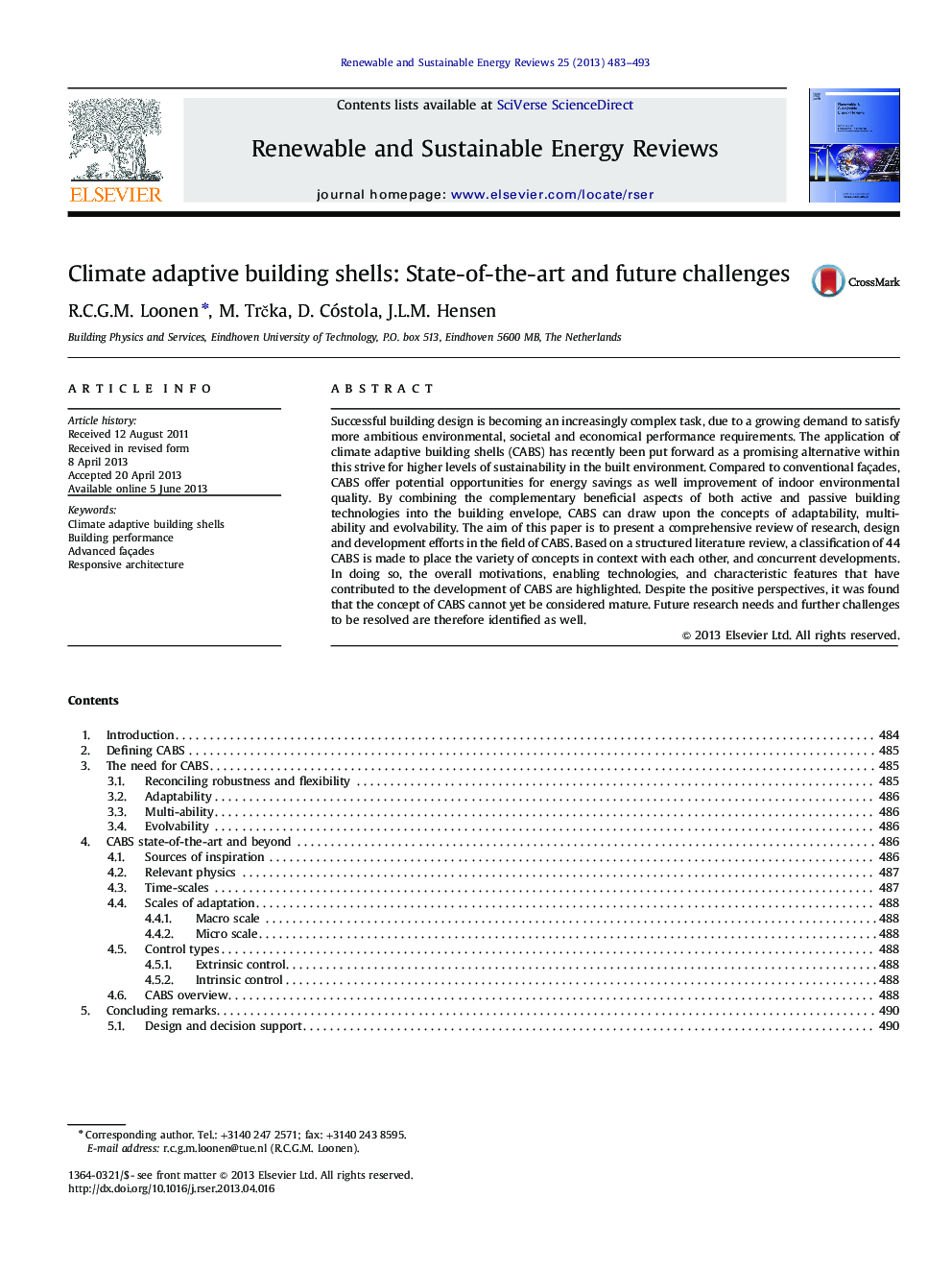| Article ID | Journal | Published Year | Pages | File Type |
|---|---|---|---|---|
| 8121696 | Renewable and Sustainable Energy Reviews | 2013 | 11 Pages |
Abstract
Successful building design is becoming an increasingly complex task, due to a growing demand to satisfy more ambitious environmental, societal and economical performance requirements. The application of climate adaptive building shells (CABS) has recently been put forward as a promising alternative within this strive for higher levels of sustainability in the built environment. Compared to conventional façades, CABS offer potential opportunities for energy savings as well improvement of indoor environmental quality. By combining the complementary beneficial aspects of both active and passive building technologies into the building envelope, CABS can draw upon the concepts of adaptability, multi-ability and evolvability. The aim of this paper is to present a comprehensive review of research, design and development efforts in the field of CABS. Based on a structured literature review, a classification of 44 CABS is made to place the variety of concepts in context with each other, and concurrent developments. In doing so, the overall motivations, enabling technologies, and characteristic features that have contributed to the development of CABS are highlighted. Despite the positive perspectives, it was found that the concept of CABS cannot yet be considered mature. Future research needs and further challenges to be resolved are therefore identified as well.
Related Topics
Physical Sciences and Engineering
Energy
Renewable Energy, Sustainability and the Environment
Authors
R.C.G.M. Loonen, M. TrÄka, D. Cóstola, J.L.M. Hensen,
